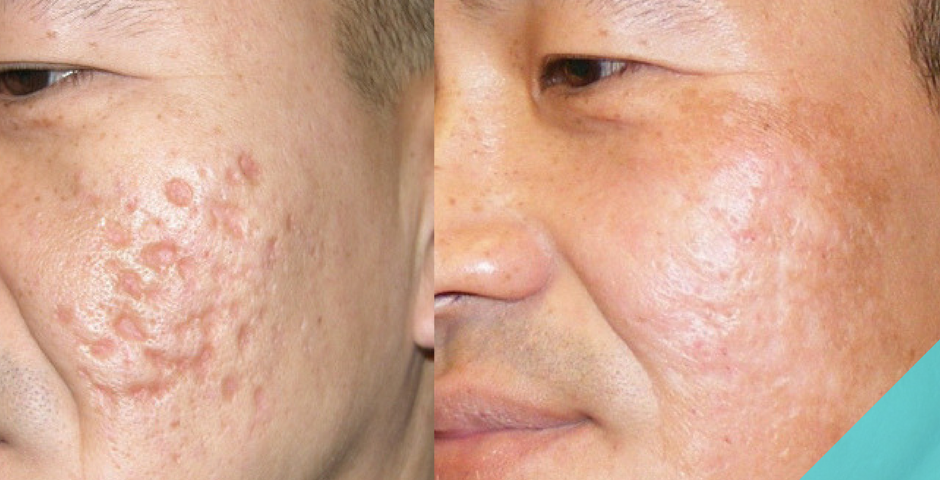Exploring Skin Disease: Treating and recognizing Acne Scars for Healthier Skin
Acne scars represent a considerable problem for individuals seeking to maintain healthy skin, as they can impact both look and self-confidence. Recognizing the different types of scars, from atrophic to hypertrophic, is essential for determining appropriate therapy alternatives.
Understanding Acne Marks
Understanding acne marks is critical for anybody that has actually experienced extreme acne, as these marks can have an enduring influence on both physical look and mental well-being. Acne scars develop when the skin undertakes inflammatory actions during energetic acne sores. The severity of scarring is commonly affected by aspects such as the type of acne, its duration, and individual skin attributes.
The body's natural healing process can cause either atrophic marks, which show up as depressions in the skin, or hypertrophic scars, which are elevated and result from overflow of collagen. Additionally, the mental toll of acne scars must not be taken too lightly; several individuals report feelings of humiliation, anxiety, and decreased self-confidence. This psychological worry can impact social communications and general lifestyle.
Dealing with acne marks needs a detailed understanding of their formation and impact. Awareness of the capacity for long-lasting effects related to untreated scars can inspire people to seek proper therapies. Early intervention and efficient management techniques can dramatically enhance skin look and improve mental durability, highlighting the importance of understanding the complexities surrounding acne scars.
Kinds Of Acne Scars
Acne scars can be categorized into unique kinds, each displaying special characteristics and needing specific therapy strategies. The main kinds of acne marks include atrophic, hypertrophic, and keloid marks.

Hypertrophic marks, on the other hand, are elevated above the skin level and are the outcome of extreme collagen production during the healing procedure. They generally stay within the limits of the initial acne sore. Keloid marks are similar however extend past the original injury website, creating larger, raised areas that can be scratchy or painful.
Comprehending these types of marks is essential for picking ideal treatment options. Various marks may react far better to certain therapies, such as laser treatments, fillers, or surgical interventions, highlighting the significance of a tailored strategy to acne scar monitoring.
Recognizing Your Scars
Acne scars look at more info typically fall into two groups: atrophic and hypertrophic scars. These can better be classified right into ice-pick marks, boxcar marks, and rolling marks, each exhibiting unique features and requiring various techniques for assessment - acne scars.
Hypertrophic scars, on the other hand, are increased and occur as a result of extreme collagen production throughout the healing process. Identifying the specific features of your scars-- such as appearance, depth, and size-- is important for correct identification. Furthermore, take into consideration the circulation of scars throughout your skin, as this can show the intensity and duration of the acne problem.
Involving with a skin specialist can provide beneficial understandings into the nature of your scars, aiding in the differentiation in between different kinds. A detailed understanding of your marks will ultimately cause an extra tailored and reliable therapy plan, making sure a clearer and much healthier complexion.
Treatment Choices Readily Available
Identifying the particular kind of acne scars present on your skin prepares for discovering reliable treatment options. Usual kinds of acne marks consist of atrophic (clinically depressed), hypertrophic (raised), and post-inflammatory erythema.
For atrophic marks, choices such as chemical peels, microneedling, and laser resurfacing are widely used. Chemical peels off utilize acids to eliminate the outer layer of skin, promoting brand-new cell development.
Hypertrophic scars can be treated with corticosteroid shots to flatten the scar or laser treatment to reduce redness and enhance appearance. acne treatment for sensitive skin. Silicone gel sheets and stress dressings may additionally help in taking care of raised scars
In addition, facial fillers can briefly fill out clinical depressions from atrophic marks, while surgical excision might be ideal for extreme situations. Each treatment option has its considerations and advantages, making it essential to talk to a this content dermatologist. They can provide personalized referrals based upon the kind and seriousness of your marks, in addition to your skin type and total health.
Tips for Prevention
Efficient prevention approaches can dramatically decrease the possibility of creating acne marks. Making use of non-comedogenic items helps avoid clogged pores, which can exacerbate acne.
Preventing need to choose or pop acne lesions is essential, as this can bring about much deeper skin damage and raise the risk of scarring. Instead, consider making use of a chilly compress or over-the-counter therapies to lower swelling and inflammation.
Sun defense is an additional important aspect of avoidance; ultraviolet (UV) rays can dim scars and hinder the healing procedure. Using a broad-spectrum sun block with a minimum of SPF 30 daily can secure the skin and promote even recovery.
Last but not least, maintaining a well balanced diet abundant in anti-oxidants, minerals, and vitamins supports skin wellness and recovery. Remaining hydrated and taking care of tension levels can additionally play a substantial role in reducing acne flare-ups. By carrying out these techniques, people can dramatically decrease their chances of developing acne scars.

Verdict
In final thought, understanding and identifying acne scars is crucial for efficient treatment and achieving much healthier skin. Various kinds of acne marks, consisting of atrophic and hypertrophic marks, demand details treatments tailored to individual needs.
The body's all-natural healing procedure can result in either atrophic scars, which appear as clinical depressions in the skin, or hypertrophic scars, which are elevated and result from overflow of collagen. They are more split right into three subtypes: ice pick marks, boxcar marks, and rolling scars. Acne marks generally fall into two classifications: hypertrophic and atrophic marks. These can even more be classified into ice-pick scars, boxcar marks, and rolling marks, each displaying distinctive characteristics and needing various methods for his response evaluation.
Numerous types of acne scars, consisting of atrophic and hypertrophic scars, require specific interventions tailored to individual requirements.